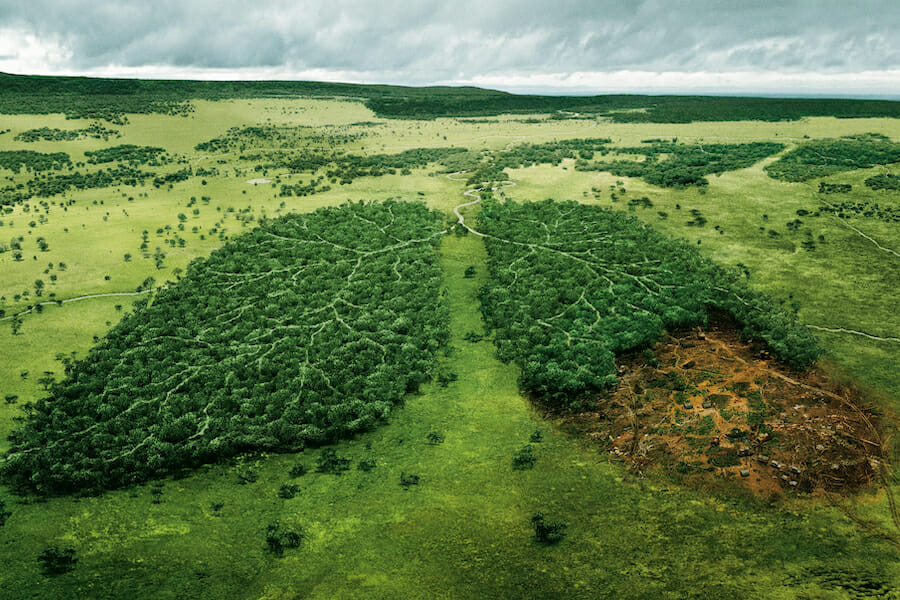
Why Co-benefits are a Must for Carbon Offset Projects in Africa
In commemoration of this year’s Earth Day, the government of Kenya partnered with 8 Billion Trees, a carbon offset company, to plant 3,200 trees in about 2 hectares of land. One silent point emerges from reading the project’s write-up, and that is, beyond the planting of trees, the project distributed 700 seedlings to nearby local communities as a co-benefit to the program.
To understand why this point is important, let us look at another similar project in Darfur, Sudan. The Darfur Efficient Cooking Stove Project, implemented by the UK Department for International Development, seeks to offset emissions by transitioning locals from biomass fuel sources to adopting LPG fuels and appliances. Like 8 Billion Trees, Darfur’s project documentation talks of co-benefits beyond emission reduction, including reduced indoor pollution, easing pressure on forest resources, and minimizing household energy expenditures. Later, we will discuss why these co-benefits are important, especially in Africa, but first, for context, let us look at the carbon trading marketplace and the African experience of the same.
The term carbon offset refers to activities to compensate for greenhouse gas emissions. The programs emerged from the Kyoto Protocol, which required nations to commit to reducing greenhouse gas emissions. Parties to the Kyoto Protocol identified emission trading, through carbon offsets programs, as one of the means of achieving desired emission reduction targets. With the programs, one can compensate for emissions in one part of the globe by engaging in emission reduction activities such as reforestation in another part of the globe. Those interested in carbon offsets can acquire them through a Joint Implementation process, where one party executes an emission reduction activity on behalf of another; or through Clean Development Mechanism (CDM), where one can offset their emissions by investing in greenhouse gas reduction activities in developing countries.
The African experience with carbon offset programs is slightly different from other parts of the world. For one, Africa as a whole is emitting far less greenhouse gas emissions than the rest of the globe. With this in mind, it is understandable to observe that most companies procuring carbon offsets do not come from Africa. That is not to mean that African nations do not benefit from these carbon offsets. While African nations may not play a huge part in the demand side of the carbon offset market, they certainly impact the supply side.
In that regard, African nations have consistently offered a platform for offsetting emissions that carbon offset program designers can use. These platforms include avenues for performing large-scale reforestation efforts, as is the case with the partnership between 8 Billion Trees and the Kenyan government, or opportunities to implement renewable energy projects, as is the case with the cooperation between the UK and the Sudanese government on the Darfur project.
While such collaborations are commendable and a step in the right direction for global collective action against climate change, they have one major flaw. The carbon offset programs implemented in Africa are overseen by local governments and the respective parent ministries. Given the governance weaknesses of most African states, the benefits of the programs may not trickle down to the communities implementing them. As a result, the projects may have little benefit at the micro-level, and at worst, they may adversely disrupt the lives of the communities where the projects are implemented.
The outcomes of such projects may also not be in line with the climate change policy objectives of African states, which prioritize building resilience on the impacts of global warming and not so much reducing or offsetting greenhouse emissions. Fortunately, there is a well-designed solution for this problem. I noted this solution as the silent point in the 8 Billion Trees and the Darfur projects I shared in the introduction. In both cases, beyond emission reduction, the projects had a co-benefit plan to ensure local communities taking part in the program also benefit.
The concept of co-benefits came later, after the Kyoto Protocol when nations realized the failure of carbon offset programs to benefit locals implementing them. Here, “co-benefits” include any other additional benefit beyond emissions reduction that locals and neighborhoods implementing an offset program enjoy. Such benefits include distributing tree seedlings to neighboring communities, as was done by 8 Billion Trees. Or even noting additional benefits such as reducing household energy expenditure as is the case with the Darfur project. Why is this important, you may ask? In my interactions with many climate change enthusiasts, I noticed that most are passionate about what they do and are keen on the community benefits of interventions. For such, the idea of “co-benefits” is welcome as it ensures benefits trickle down to the community level. What is more, “co-benefits” are the only logical way that local African communities implementing offset programs can benefit directly from such projects.
So, now that you know about the importance of co-benefits in carbon offset programs, what next? Well, if you are a purchaser in the carbon marketplace, you procure offset programs that are marked by standards that indicate the presence of co-benefits. Such standards will give you a reasonable degree of certainty that the procured offset program benefits the people implementing it.
For instance, projects applying for the Gold Carbon Standard must demonstrate community benefits to receive the mark. Similarly, sustainable land management projects applying for the Community and Biodiversity Standard must show how the projects address climate change while supporting local communities and conserving biodiversity. For sellers in the carbon trading market, such standards will go a long way in giving you the credibility required in the public’s eyes. The standards communicate a firm commitment to ensuring community benefits, which many buyers welcome in the carbon trading market.

